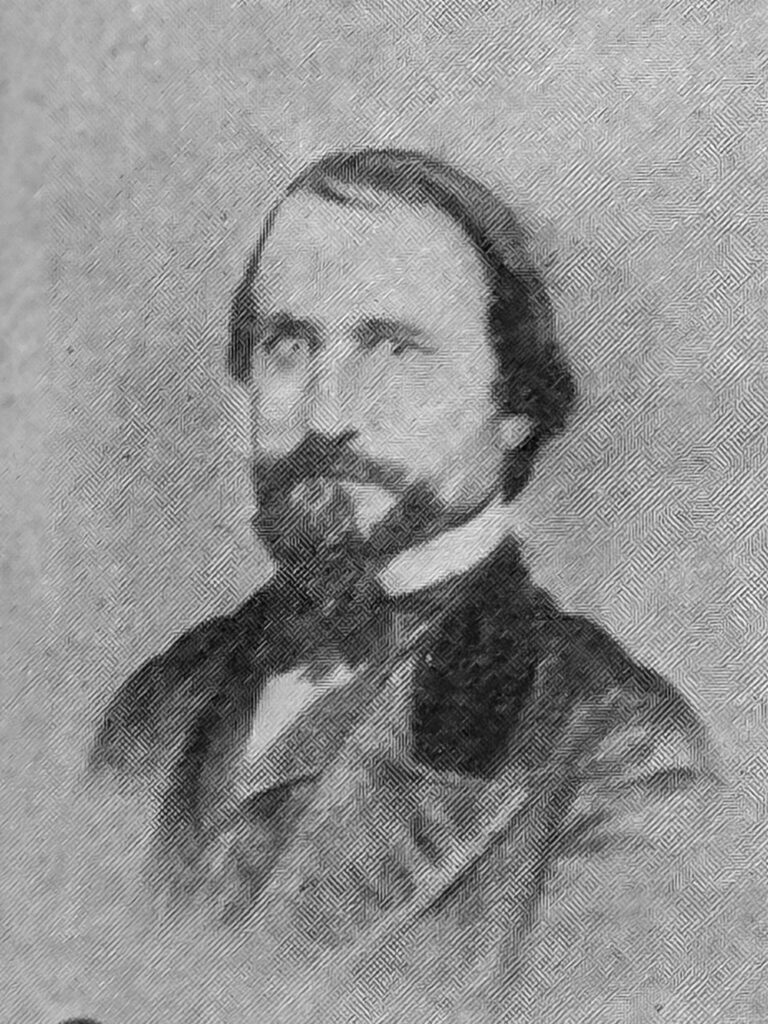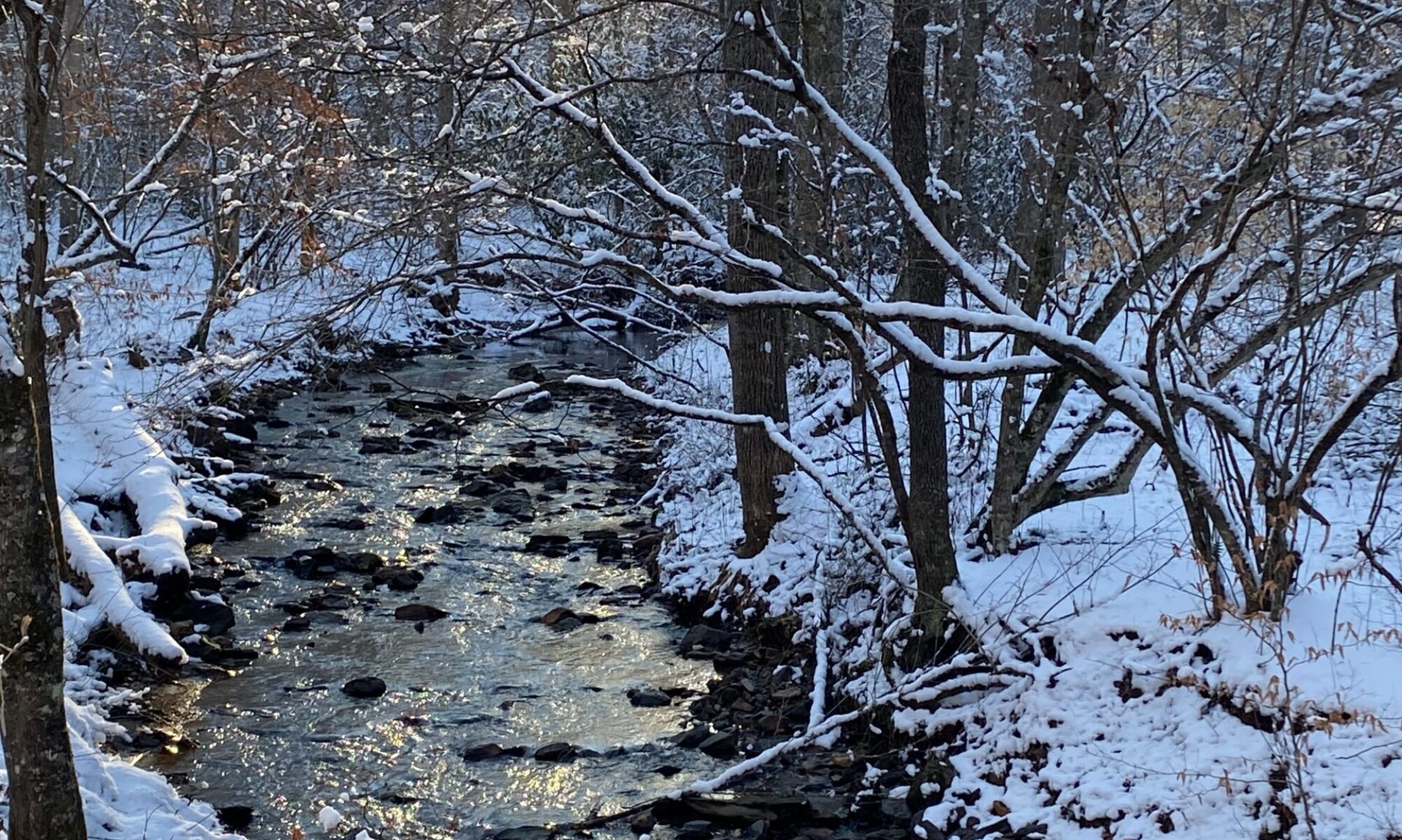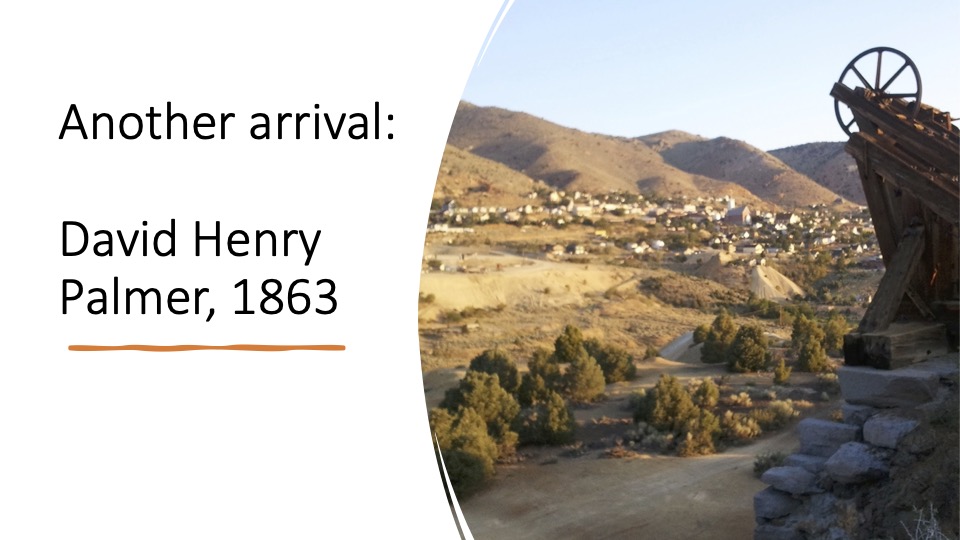Several weeks ago, I wrote about my journey to Nevada in 1988. This is a follow up piece, as I try to draw upon the history of the church and tie them to my personal experiences in Nevada. If you didn’t read my first piece, click here.
Of course, I was not the first pastor to arrive in Virginia City, although I was one of the few who made the journey without going through California first. Even after the church started depending on year-long student interns in the 1970s, most all their interns came from the West Coast. The same had been true of their called ministers before employing students. Even those not originally from the West Coast, generally spent time in California before making their way to Nevada. This was especially true in the early years before the completion of the transcontinental railroad. And most of the pastors stayed for only a year or so. In his 1927 history of the Presbyterian Church in California, Edward Arthur Wicher reported that in the congregation’s first 65 years, it had over 30 ministers.
The Church is Organized
Presbyterian pastors had been coming and going in Virginia City since the 1862, when the Reverend William Wallace Brier organized the church. Brier was the first minister of the New School branch of the Presbyterian Church on the Pacific Coast.
Background to church mission work on the West Coast
The Presbyterian Church had split in 1837 into two camps. Although there were many reasons for the split, it mostly had to do with how open the church should be toward revivalism. The Old School shunned the use of emotion in revivals of the Great Awakening, while the New School allowed such techniques. The New School was also more open toward movements for social change, especially abolition along with the work of parachurch organizations. Both the Old School and New School split again, this time along sectional lines. The New School split first, between the north and south, in 1854. Then, at the beginning of the Civil War, the Old School also split regionally. The Southern Old and New School branches would join during the war. The northern branches rejoined shortly after the war. While I grew up in the Southern branch of the Presbyterian Church, the two regional denominations came back together in 1984, two years before I entered seminary.

In 1850, when Brier arrived in San Francisco, there were still deep divisions and distrust between the two groups of Presbyterians. Discovering the Old School Presbyterians had already established churches in the larger communities along the coast, he headed inland to the mining communities and founded a church in Marysville. Two years later he organized a congregation in Grass Valley. Appointed the exploring agent for the New School Presbyterians, Brier joined the “Rush to Washoe” (as Western Nevada was known then) in 1861. Brier was like most of the miners who initially made the journey into Nevada, coming from the West as mining began to wane in California.
First Church organized in Nevada
In the summer of 1861, Brier spent time in Carson City, where he organized a church in a small school building. He headed back across the Sierras before winter, but persuaded the Reverend A. F. White, a pastor from the Midwest, but currently serving in Gilroy, California, to take charge of the church. White, sensing the opportunity, appealed to the Home Mission Board early in 1862 for more help:
A failure in this effort would be to yield the whole Territory almost to unrestrained vice. Will you sustain us in planting the standard of the cross here amid these mountains? The infant church (Carson City)—the first born in the great basin between the Sierras and the Rocky Mountains, stretches forth her hands to you for help.
Brier would return to Nevada in the summer of 1862. This time, he called a meeting of those interested in a Presbyterian Church in Virginia City. Meeting at the Methodist Episcopal Church, they organized themselves into a congregation on September 21, 1862. Shortly thereafter, he left Nevada and A. F. White assumed responsibility for both the Carson City and Virginia City congregations. That winter, White wrote another letter to the Home Mission Board:
The wealth is here – untold. If we could concentrate our best talent here for the next two years, if our Church would only seize these sources of influence now offered here, she could in a short time be independent, and place a man in every village on the Pacific slope and sustain him there.
New Pastors recruited

White’s pleas did not fall on deaf ears. Even though the Civil War raged in the east, Henry Kendall, the head of the Home Mission Board for the New School Presbyterians was at work. He understood that after the Civil War, the nation would be linked together by railroad, opening vast areas for new communities. He set out to recruit pastors to answer the call to go west. In the spring of 1863, Kendall, recruited William Henry Palmer and William Wert Macomber to become missionaries to Nevada. The two were soon-to-be graduates from Auburn Seminary in the Finger Lake Regions of New York. He also recruited the Reverend L. P. Webber, a minister who had been serving in Indiana.
After graduation, the Presbytery of Buffalo ordained both Palmer and Macomber. They also married. Palmer married Jennie Gilmore, the daughter of a physician, on June 25, 1863. The Palmer’s enjoyed a honeymoon night at Niagara Falls. It appears Jennie was excited at the prospects in Nevada, writing to her family:
I have felt that I was doing so little good in the world and the burden of my prayer has been that I might be the means of bringing souls to Christ. What a field of usefulness is now open before me and I am amazed to think one so feeble as I should have been called to such a great and difficult work.
Travel to Nevada in 1863
On July 9, 1863, shortly after the Battle of Gettysburg, the couple took a train from Western New York to New City. While Palmer doesn’t mention this in his journal, this would have been during the New York City draft riots. They met up with the Macombers. In a worship service at Brick Presbyterian, prayers were offered for their safe travels. On July 13, the four of them boarded the mail steamer, Northern Lights, bound for Panama. Arriving in the jungle a half century before the Panama Canal, but after a railroad made the travel across the isthmus a simple affair. On the Pacific, they boarded another steamer, “Golden Age”, for the trip to San Francisco.
Palmer, who faithfully kept a journal since January 1 of that year wrote little about the journey except to mention that both he and his wife, Jennie, were sick on the sea passages. They arrived in San Francisco in early August. There, Palmer and Macomber preached in various churches.
On August 16, 1863, Palmer preached in Oakland. Afterwards, he met with Nelson Winton, an elder in the Virginia City Church. Winton paid their hotel bill and arranged passage for them to travel to Nevada.
From California to Nevada
On August 19, Palmer and his wife took an overnight riverboat to Sacramento, arriving at 6 the next morning. That morning, August 20th, they boarded a train for the run to Folsom, where the tracks eastward ended. They switched to a stagecoach. That evening, they dined in Placerville, at the foothills of the mountain. Then, they took off for Nevada, on a stage that frequently had to change horses as it climbed up into the mountains on rocky and windy roads. Writing to his parent’s, Palmer described this experience:
As the road became more difficult and dangerous, the speed of the coach seemed to increase also. Soon we found ourselves circling around lofty hills and deep valleys. Many miles of travel were but few of progress. The grade was nowhere very steep, but at times we could look from the windows on one side up hundreds and even thousands of feet to the summit above us, and from the other side as many feet below us upon the rocks at the bottom of the ravines. On this narrow-crooked road, with no protection at the edge, with six galloping horses before the coach, which was rocking and jolting about, I felt none or little sense [of] danger, but was most deeply interested in the strange, grand, and awful scenery through which we were passing.
Later that night they stopped at Strawberry, where the coach changed horses before heading in the dark over Johnson Pass. The old stage stop in Strawberry is still in operation as a store and restaurant along US 50. In the early morning hours, they skirted the south shore of Lake Tahoe. Jennie wrote home describing the beauty of the moon as it reflected off the lake. The moon would have been not quite at first quarter, or half-full. Although traveling by night meant that they would not be able to see much, it allowed the stage to make better time as the grades were clogged during daylight with teamsters hauling heavy freight to the mines.
Arriving in Carson City
Their stage journey continued, leaving Tahoe, and descending the steep Kingsbury Grade into Genoa. I can imagine the newlyweds were shocked as they descended the east slow of the Sierras and entered the vast desert of the Great Basin, with few trees and lots of sagebrush. At Genoa (formerly Mormon Station and the first incorporated town in the territory, the line turned north toward Carson City. They arrived on the morning on August 21, checking into the St. Charles Hotel. Palmer would later write home describing it as the dirtiest hotel he’d seen. After cleaning up from their journey, they had lunch with James Nye, the Governor of the Nevada Territory.
Palmer’s Labor in Carson City
Palmer didn’t have much of an opportunity to rest. Having arrived in Carson City, White left him in charge of the church and headed off east on a scouting expedition to the newly established Reese River Mining District. During his first two days in Carson City, Palmer officiated at three funerals. He described them to his parents in this fashion: “The first an awful drunkard, the second one of the greatest gamblers and the profanest man in the territory, and the third was murdered.” He continued, telling of a saloon in Carson City where six men had been shot or stabbed recently. Then, added, “They tell me Virginia City is still worse.” In the ten days of White’s absence, Palmer officiated at five funerals.
The Palmers arrive in Virginia City
Palmer and his wife moved to Virginia City after White’s return. At first, they stayed in the home of Nelson Winton. Things didn’t get easier for during his first week on the Comstock. In addition to preaching in the courthouse where the congregation met, he had four weddings (three of which were in Dayton) and a funeral. It was decided that Palmer would serve the church in Virginia City, while Macomber would serve Calvary Presbyterian in Gold Hill (just south of Virginia City). Webber travelled to the Reese River and organized a congregation in Austin. His story ended in tragedy.
Sources:
Primary sources provided by the late Elisabeth Ruddy of Encinitas, CA. Ruddy provided me with letters, newspaper clippings and journals of her grandfather, David Henry Palmer. Upon agreement, after I had finished with the papers and transcribed the journals, they were donated to the Presbyterian Historical Society in Philadelphia, PA, with copies of the transcription provided to the Nevada Historical Society in Reno, NV.
Much of his information can also be found in two journal articles I wrote along with my dissertation.
Garrison, Charles Jeffrey, “’How the Devil Tempts Us to Go Aside from Christ:’ The History of First Presbyterian Church of Virginia City, 1862-1867. Nevada Historical Society Quarterly (36:1, Spring 1993), 13-34.
______, “David Henry Palmer: A Pastoral Baptism in Western Mining Camps,” American Presbyterians: Journal of Presbyterian History (72:3, Fall 1994), 173-186.
______. “Presbyterians and Miners: The Church’s Response to the Comstock Lode, 1862-1924. (San Francisco Theological Seminary, 2002).
See also:
Wicher, Edward Arthur, The Presbyterian Church in California, 1849-1927 (New York: Frederick H. Hitchcock, 1927). Because most of the Nevada Churches were tied to California, Wicher includes a chapter on Nevada. The photo of Brier comes from this book.


Great historic information. America is embroiled in Civil War and Brier (et al) has the presence of mind to focus on our soul. Kudos to him.
It wasn’t just Brier as he had been in California for a decade by the time the war began. Henry Kendall was also instrumental. He would later make an overland trip west before the end of the war and set forth a period of rapid church expansion.
I really enjoy reading your stories, it’s interesting to read what has happened to other people in their life. I really enjoy reading about what you did in Nevada, since that’s where I live now.
Nevada is an interesting state (but then I may have the largest library on Nevada in Virginia). The year I was in Nevada, which didn’t start out this way, ended up with one of the best years of my life. I look back fondly on that year and the development that went on in that little church.